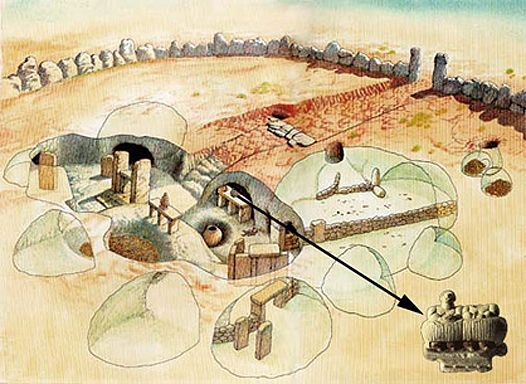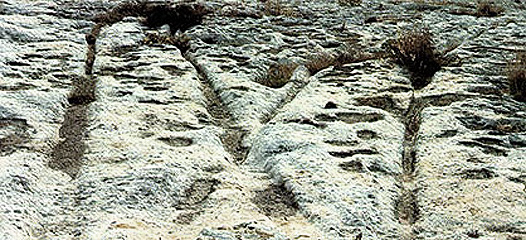 |
 |
XAGHRA STONE CIRCLE |
Page 6/6 |
An underground cemetary, set inside a system of natural caves, just below the surface of the hill-top overlooking
Ggantija, some 300 metres to its west. The cemetary was formalised by a boundary of megalithic and interlocking standing stones [hence its name], with a monumental entrance on the eastern side facing the
Ggantija temples. In the centre of Xaghra there would have been a large space for the arrangement of a circle of monumental standing stones – below ground level.

The wall itself has since disappeared, and the only evidence is from documentation surviving from the late 18th and early 19th centuries – descriptions, engravings and watercolours.
It is estimated that up to 1000 individuals were buried at Xaghra – making it possibly the richest Neolithic collective cemetary discovered. The clustering of bones appears to be based on age and gender rather than social differentiation. The site was probably an ossuary for secondary burial, rather than a proper cemetary. Statues and figurines were also deposited within.
 |
MALTESE CART RUTS |
Malta provides a further achaeological conundrum - the Maltese Cart Ruts. Impossible to date, the name implies that they are parallel to each other, as though made by wheels on an axle. This is not so, as the ruts wander in and out. The best example is the Buskett group which lies next to the largest and most important of Malta’s ancient quarries. Therefore they may have been used for the transportation of construction blocks - many of these blocks in the temples have stone balls buried under them, and perhaps these ruts were cut to channel the stone balls while they were used as rollers to transport the stone blocks.

→
Bradshaw Foundation




